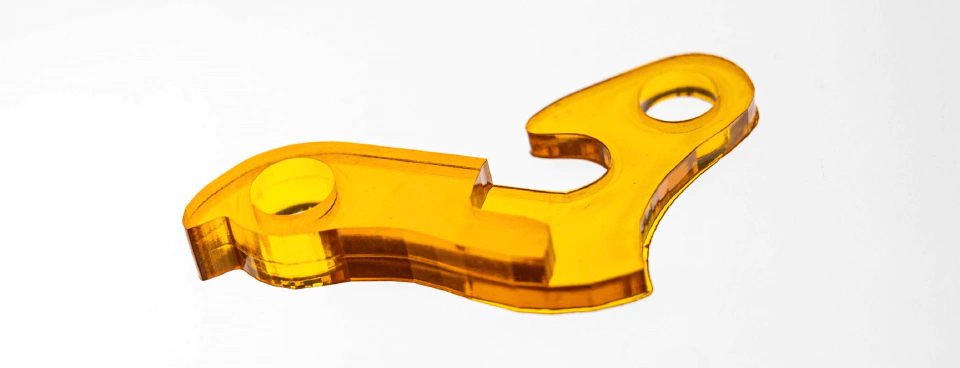It’s easy when considering high-strength 3D printing to immediately turn to metal materials. Metals are well known to tick a lot of boxes when it comes to being used for demanding applications: strength, durability, toughness. But 3D printing metal also comes with additional constraints in terms of material availability, design constraints, exacting production and post-processing requirements, and a generally more labor-intensive, expensive undertaking.
A rising trend in additive manufacturing is to replace metal with high-strength plastic materials. But what does it really mean to replace metal?
Why 3D Print Metal?
Metal 3D printing can be an exciting proposition. Creating new geometries in familiar alloys by “just hitting print” sounds great. All the benefits of 3D printing brought into play for conductive, durable parts, no casting or forging required!
Lightweighted designs, part consolidation to bring component counts down, and creating internal conformal cooling structures are among some of the most appealing calls to look toward metal 3D printing. High-value, low-volume applications like in the aerospace and medical industries have been turning to these technologies to create high-end parts.
Why Not 3D Print Metal?
There’s a big “but” when it comes to metal 3D printing, though – well, a few of them. Moving from metal injection molding (MIM) or other traditional forms of metal manufacturing toward AM isn’t so simple as putting a traditional metal powder into a new machine. Any metal materials must be carefully formulated and tuned to the systems and processes where they’ll be used. This, unsurprisingly, isn’t an inexpensive undertaking.
Even when those materials are available, 3D printing a metal part is still often more expensive than traditional production would be. A failed print can cost hundreds or thousands of dollars in material costs alone. Often, unfused metal powders are also unable to be recycled, adding to both waste streams and wasted material costs.
As it turns out, though, traditional metal processes aren’t the only available alternative to getting the complex metal part you want.
3D Printing Materials Comparison
A rising trend in the additive manufacturing industry is to replace metal with thermoplastic materials. While this may sound counterintuitive, there are solid reasons why plastics may be a better fit for many applications.
Ultimately, finding the best fit for a given job is always the best approach to any problem. If you need to get a nail in the wall, a hammer is the obvious solution – but a rubber mallet is generally a better choice than a metal sledgehammer for home use. It’s all about finding the right tool for the job. That comes down to what you’re actually trying to accomplish.
Often, “I want to 3D print metal” can translate to “I need a high-strength 3D print.”
3D Printing Plastic Instead of Metal
In many aspects, 3D printing with the right thermoplastic choice will create a better-fit solution than a similar metal part could provide. For example, an engineering-grade plastic, like COR Alpha, offers a superior strength-to-weight ratio than metal would. Similarly, COR Alpha can outperform metal when it comes to:
- Shock absorbency
- Elongation at break
- Strength-to-stiffness
- Lower waste
- Lower cost
- Lower weight
- Less post-processing
- Dimensional accuracy
COR Alpha is among the small class of truly engineering-grade 3D printing resins available today that can stand the heat in a comparison like this – literally. 3D printed COR Alpha won’t deform until above 100 degrees C, and can go above 150 C depending on the load condition. The material’s extreme tensile strength and isotropic properties also lend it well to standing up to extreme environments.
Taking a step back to question the assumption (e.g., that only metal parts will be strong enough) can offer a moment for thorough 3D printing materials comparison. Understanding the options at hand and when a plastic solution is the best option can take your project to overpriced and just-good-enough to fitting the budget and fitting the full bill of expectations. A rugged polymer can be a faster and cheaper metal alternative for many components, including fixtures, enclosures, housings, brackets, fluidics and connectors.
Ready to start 3D printing with high-strength plastic for real results? Book a call with polySpectra’s experts today and let’s get started.












